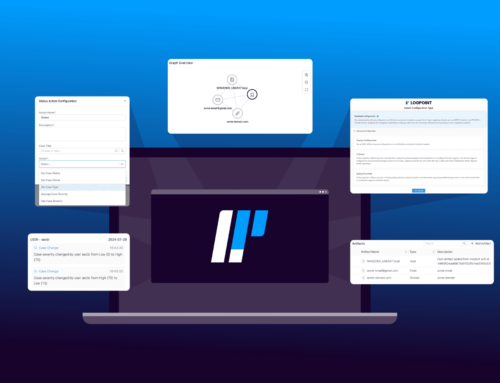Organizations face an ever-increasing number of sophisticated cyber threats. Traditional network security models, which rely on perimeter-based defenses, are no longer sufficient in protecting sensitive data and critical systems. A new approach known as zero-trust network security has emerged to address this challenge. This article will delve into the concept of zero-trust network security, its principles, and how it can help organizations establish stronger security measures to combat evolving cyber threats.

What is Zero Trust Network Security?
Zero trust network security is an information security framework that emphasizes the principle of "never trust, always verify." Unlike traditional security models that operate on the assumption of trust within a network perimeter, zero trust takes a more granular and dynamic approach to security. It assumes that all users, devices, and network traffic are potentially untrusted, regardless of their location or whether they are inside or outside the network perimeter.
Principles of Zero Trust Network Security
- Strict Access Control: Zero trust requires organizations to implement strict access controls based on user identity, device health, location, and other contextual factors. Users and devices must authenticate and authorize themselves for every access attempt, even if they are already inside the network.
- Least Privilege: Zero trust follows the principle of least privilege, granting users and devices only the minimal level of access required to perform their tasks. Access privileges are continuously evaluated and adjusted based on the user's needs and the security posture of the device.
- Microsegmentation: Zero trust promotes network segmentation into smaller, isolated segments called microsegments. Each microsegment contains a limited set of resources and enforces strict access controls, reducing the potential attack surface and preventing lateral movement within the network.
- Continuous Monitoring and Analytics: Zero trust relies on continuous monitoring and real-time analytics to detect anomalies, unusual behavior, and potential threats. It leverages advanced technologies such as machine learning and behavioral analytics to identify patterns indicative of malicious activities.
Benefits of Zero Trust Network Security
- Enhanced Security: By assuming zero trust, organizations can significantly reduce the risk of data breaches and unauthorized access. The strict access controls and continuous monitoring make it harder for attackers to move laterally within the network and gain access to sensitive resources.
- Protection of Dynamic Environments: With the increasing adoption of cloud services, remote work, and the Internet of Things (IoT), network boundaries are no longer well-defined. Zero trust provides a scalable and adaptable security framework that can protect dynamic and distributed environments effectively.
- Compliance and Regulatory Requirements: Zero trust aligns with many industry best practices and regulatory requirements. It helps organizations meet compliance standards by enforcing strong access controls, data protection measures, and continuous monitoring.
- Improved User Experience: Despite its rigorous security measures, zero trust can enhance the user experience. It enables users to access the resources they need from anywhere, anytime, without compromising security. The contextual-based access controls allow for more flexible and efficient authentication and authorization processes.
What are the primary categories of network security threats?
Network security threats encompass various types of risks that can compromise the integrity, confidentiality, and availability of computer networks. These threats can be broadly classified into four main categories:
External Threats: External threats originate from outside sources, including malicious individuals, organizations, or even natural disasters. These threats exploit vulnerabilities within a network, aiming to disrupt operations, compromise data, or breach security measures. Attackers may employ techniques like hacking, phishing, or distributed denial-of-service (DDoS) attacks to exploit weaknesses and gain unauthorized access.
Internal Threats: Internal threats arise from individuals within an organization who have authorized access to the network but misuse their privileges. This category includes disgruntled employees, contractors, or partners who may intentionally or accidentally compromise network security. Insider threats can involve data theft, sabotage, unauthorized access, or the introduction of malware or malicious activities.
Targeted Threats: Targeted threats are strategic and well-planned attacks carried out by organized cybercriminals or state-sponsored actors. These attackers possess advanced skills and resources, aiming to achieve specific goals such as stealing sensitive data, conducting industrial espionage, or disrupting critical infrastructure. Targeted threats often involve sophisticated techniques, including advanced persistent threats (APTs), zero-day exploits, or social engineering tactics.
Opportunistic Attacks: Opportunistic attacks are typically random and automated, executed by individuals with limited expertise or without a specific objective. These attackers cast a wide net, scanning networks for vulnerabilities and exploiting any weak points they discover. Common examples of opportunistic attacks include malware infections, botnets, and mass phishing campaigns.
What is the difference between a threat and a vulnerability?
In simple terms, a threat refers to an attacker attempting to breach a system, while a vulnerability is a weakness or flaw in the system that the attacker can exploit. To illustrate, if threats are like attackers throwing rocks at a wall, vulnerabilities are the weak spots in the wall where the attackers can break through, such as a window or a loose rock.
Vulnerabilities are typically unintentional errors or oversights rather than deliberate actions. For instance, leaving an Amazon Web Services (AWS) bucket open to the public Internet or failing to change a password or install a software patch on time. Accurics reports that misconfigured cloud storage services are found in 93% of cloud deployments, highlighting the increasing frequency of such mistakes.
Moreover, vulnerabilities can also extend to human factors. For instance, if employees have not been trained to avoid clicking on suspicious links, they become vulnerable to phishing attacks.
Overall, understanding the distinction between threats and vulnerabilities is crucial for implementing effective security measures to mitigate risks and safeguard systems and data.
Implementing Zero Trust Network Security
Implementing zero-trust network security requires a holistic approach and collaboration across different aspects of an organization, including people, processes, and technology. Here are some key steps to consider:
- Assess Your Current Security Posture: Conduct a comprehensive assessment of your existing security infrastructure, policies, and procedures to identify vulnerabilities and gaps that need to be addressed.
- Develop a Zero Trust Strategy: Define your organization's zero trust strategy based on its unique requirements, risk appetite, and business objectives. Consider factors such as user authentication, device health checks, network segmentation, and continuous monitoring.
- Adopt Multi-Factor Authentication (MFA): Implement MFA for user authentication to add an extra layer of security. MFA requires users to provide multiple forms of authentication, such as passwords, biometrics, or hardware tokens, to verify their identities.
- Embrace Microsegmentation: Implement network segmentation through microsegmentation. Divide your network into smaller, isolated segments and enforce strict access controls between them to minimize the impact of potential breaches.
- Deploy Advanced Threat Detection and Response Solutions: Implement advanced security solutions that leverage artificial intelligence, machine learning, and behavior analytics to detect and respond to threats in real time.
- Educate and Train Employees: Security awareness and training are crucial in ensuring the success of any security strategy. Educate employees about the principles and benefits of zero trust, and provide ongoing training to help them understand their roles and responsibilities in maintaining a secure environment.
Logpoint and Network Security
Logpoint Converged SIEM is a comprehensive platform that can greatly enhance network security. Here are some ways in which Logpoint Converged SIEM can help:
- Real-time threat detection: Logpoint Converged SIEM collects and analyzes data from various sources, such as network devices, servers, applications, and endpoints. By correlating and analyzing this data in real-time, it can identify potential security threats and anomalies, allowing organizations to respond promptly to mitigate risks.
- Incident response and investigation: In the event of a security incident, Logpoint Converged SIEM provides robust incident response capabilities. It offers a centralized platform to streamline the investigation process, enabling security teams to quickly identify the source, impact, and extent of an incident. This accelerates incident response and helps in preventing future attacks.
- Compliance management: Logpoint Converged SIEM assists organizations in meeting regulatory and compliance requirements. It provides pre-built compliance reports and dashboards, simplifying the auditing process. By continuously monitoring and correlating security events with compliance frameworks, it helps ensure adherence to industry standards and regulations.
- Threat intelligence integration: Logpoint Converged SIEM integrates with external threat intelligence feeds and databases. By leveraging these sources, it enhances its ability to detect and respond to emerging threats. This integration enables organizations to stay updated on the latest threat landscape and proactively defend against evolving cyber threats.
- Network visibility and anomaly detection: Logpoint Converged SIEM offers comprehensive network visibility, allowing organizations to monitor network traffic and identify abnormal behavior or suspicious activities. By leveraging machine learning algorithms and behavioral analytics, it can detect anomalies and potential indicators of compromise, enabling timely response and mitigation.
- User Entity and Behavior Analytics (UEBA): Logpoint Converged SIEM employs UEBA capabilities to detect insider threats and unusual user behavior. By analyzing user activities and applying advanced behavioral models, it can identify potential insider threats, compromised accounts, or unauthorized access attempts.
In summary, Logpoint Converged SIEM provides a powerful platform and functionalities that enable organizations to enhance their network security posture. By facilitating real-time threat detection, incident response, compliance management, and leveraging threat intelligence and analytics, it empowers security teams to proactively protect their networks, systems, and sensitive data.







